#Li II 1974
Text


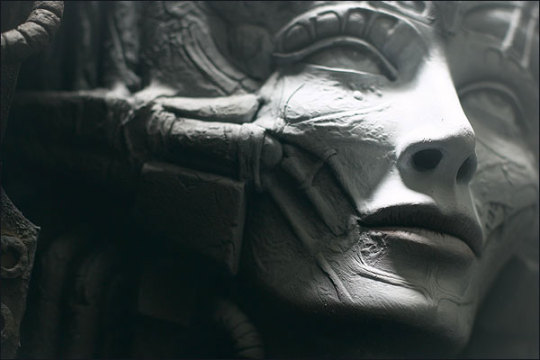

A MCFARLANE TOYS EXCLUSIVE -- FROM THE BIOMECHANICAL WORLD OF H.R. GIGER.
PIC(S) INFO: Spotlight on promotional shots of the exclusive "LI II" resin sculpture from McFarlane Toys, a replica of H.R. Giger's reported greatest masterwork created in 1974. The statue/sculpture was released in October 2004.
EXTRA PIC INFO: H.R. Giger's “Li II” (airbrushed painting, c. 1974 — model, Li Tobler).
BRAND: H.R. Giger
GENRE: Horror & Fantasy
PRODUCT TYPE: Exclusive
PRODUCT TYPE: Resin Statue
SPECIFICATIONS:
PAINT: Original Paint
FORMAT: Statue
SCALE: Other
PACKAGING: Boxed
""Li II" from McFarlane Toys is a limited-edition three-dimensional sculpture of H.R. Giger’s classic "LI II" painting."
-- MCFARLANE TOYS, c. fall 2004
Sources: https://mcfarlane.com/toys/li-ii & www.coroflot.com/mgulen/Traditional-Fabricatoin-Misc-Monsters-n-Maniacs.
#LI II#Li II#LI II 1974#Airbrush Art#Airbrushed painting#H.R. Giger Art#Dark Fantasy#Li II 1974#Resin Model#Resin Statue#2004#McFarlane Toys#H.R. Giger#70s#Li Tobler#Paintings#Airbrush#Horror#Hans Ruedi Giger#Giger#1974#Airbrushed Art#Dark Art#Hans Ruedi Giger Art#Super Seventies#HR Giger
4 notes
·
View notes
Text

H.R. Giger - Li II (1974)
1K notes
·
View notes
Photo

New Post has been published on https://fastmusclecar.com/exploring-the-timeless-appeal-of-classic-vintage-muscle-cars/best-muscle-cars/
Exploring the Timeless Appeal of Classic Vintage Muscle Cars
In the fast-paced world of automobiles, where each passing year brings forth innovations and modern designs, a class of vehicles seems to defy the sands of time. With their roaring engines and iconic designs, classic vintage muscle cars maintain an enduring appeal that transcends generations. This article explores the reasons behind the timeless allure of these automotive legends.
The Birth of an Icon
Classic muscle cars arose in the mid-twentieth century, fueled by post-World War II optimism and a thirst for speed. Sensing a demand for excitement on the road, American automakers developed muscle cars. The Ford Mustang, Chevrolet Camaro, and Dodge Charger emerged as trailblazers, representing the spirit of defiance and power that defined a period. These brands are characterized by unique engine and body parts that ultimately make the automobile stand out. You can see more info here about various automotive products from these brands.
The allure of classic muscle cars lies in their performance and their symbolism. These vehicles were born when the open road symbolized freedom and driving was not just a means of transportation but an expression of individualism and adventure.
Some of the most iconic classic muscle cars that have left an indelible mark on the industry are:
Ford Mustang
Model Years: 1964-1973
The Ford Mustang is an American icon and one of the pioneers of the muscle car era. Its introduction in 1964 created the “pony car” class, offering a blend of style, performance and affordability. The 1967 Shelby GT500 is particularly revered, featuring a powerful 428 Cobra Jet engine.
Dodge Charger
Model Years: 1966-1974
The Dodge Charger is known for its bold design and powerful engines. The second-generation Charger (1968-1970) is often considered the pinnacle, with the iconic “Bullitt” Charger R/T and the monstrous Charger Daytona, designed for NASCAR dominance. The 1969 Charger, immortalized in movies like “The Dukes of Hazzard,” is particularly iconic.
Chevrolet Camaro
Model Years: 1967-1969
The Chevrolet Camaro is another heavyweight in the muscle car arena. The first-generation Camaro, especially the SS and Z/28 models, is celebrated for its aggressive styling and high-performance options. The 1969 Camaro ZL1 is one of the most sought-after muscle cars, boasting an all-aluminum 427 cubic-inch engine.
Pontiac GTO
Model Years: 1964-1974
Often credited as the first true muscle car, the Pontiac GTO paved the way for the revolution. The early GTOs, especially the 1966 model with the potent Tri-Power carburetion system, are highly coveted. The GTO embodied putting a big engine in a midsize car, creating a formula that defined the muscle car ethos.
Model Years: 1964-1972
Chevrolet Chevelle SS:
The Chevelle SS is a classic example of Chevrolet’s prowess in crafting muscle cars. The SS (Super Sport) package, available on various Chevelle models, turned these midsize cars into high-performance beasts. The 1970 Chevelle SS with the LS6 454 cubic-inch V8 is legendary, boasting one of the highest factory horsepower ratings of the era.
Design Elegance that Stands the Test of Time
The timeless design of classic muscle vehicles is one of their distinguishing features. The sleek forms, forceful poses and eye-catching color palettes distinguish them from their counterparts. The union of form and function in these vehicles reflects a time when style was just as vital as substance. Even in the middle of a sea of modern automobiles, the timeless beauty of their design guarantees that these cars remain head-turners.
Classic muscle cars are not just machines but works of art on wheels. The aesthetic appeal of their design is not subject to the whims of passing trends, making them a testament to the notion that true beauty is eternal.
Nostalgia and Cultural Significance
Beyond their mechanical prowess, classic muscle cars carry a cultural significance that adds layers to their timeless appeal. These vehicles are not just relics of the past; they are living reminders of a bygone era. Nostalgia plays a pivotal role in their enduring popularity, as they evoke memories of when the automobile represented more than just a mode of transportation.
Movies, music and popular culture have all contributed to the mystique surrounding classic muscle cars. From iconic scenes in films to the rock ‘n’ roll tunes that echoed through the radio waves, these cars became intertwined with the cultural fabric of their time. Owning a classic muscle car is not just about having a vehicle; it’s about possessing a piece of history that encapsulates the spirit of an era.
Conclusion
In a world where trends come and go and technology advances relentlessly, classic vintage muscle cars stand as stalwart guardians of a bygone era. The birth of these iconic vehicles marked a turning point in automotive history, and their timeless allure continues to captivate enthusiasts across the globe. From the engine’s roar to the elegance of their design, classic muscle cars are more than just vehicles; they are living legends, embodying the spirit of an age that refuses to be forgotten.
4 notes
·
View notes
Text
two + two equals four(ever) ii
chapter one here
in which hob sticks his nose where it really doesn't belong
on ao3
Hob sighs and rests his palm on Toivo’s head, scratching behind the great wolf’s ear as they stare at the door. The clock ticks away the seconds, the minutes, and closing time draws nearer. Never before has so much time slipped away before his Stranger appeared. He has always shown up, always arrived no later than eight in the evening. They may have parted after the calendar flipped to the eighth, but his Stranger always, without fail, spent the night of the seventh with Hob.
But…
12:01. After midnight, and no Stranger.
Hob swallows thickly and finishes off his glass of whisky. Toivo whines low in his throat, pressing closer into Hob’s leg, and rests his head on his front paws.
“Ah, it’s fine, Toi. We—we don’t need him, anyway, do we?”
“He’s a constant,” Toivo rumbles back, and Hob can’t argue with that.
Sighing, Hob rises to his feet and heads toward the bar. Toivo pads along beside him, easily winding his way around the humans and other dæmons crowding the pub. No one gives them a second look despite Toivo’s size. Why would they? A wolf is hardly unsurprising; there are odder dæmons. Lushing Lou’s had been a spider—a black widow, if Hob remembers correctly—and that Marisa lady has a golden-furred monkey.
After paying, Hob heads outside and pulls a silver tin from his pocket. It’s old-fashioned, carrying a case for his cigarettes, but Hob likes to think old-fashioned isn’t always a bad thing. At least his smokes go without being crushed in the case. Toivo’s lip curls when Hob lights a cigarette, and Hob blows out a heavy breath full of smoke.
They’re both feeling the loss, and Hob wonders if there is anything he can do. Any way he can apologise to his Stranger. Wonders if he will be left drinking alone in a hundred years’ time.
As they walk through the midnight dark, Hob ruminates over the last century. He had so much to tell his Stranger. He’d received a teaching degree—twice. Once as Rob Gelding for a uni in London in the fifties, another in New York in 1974 under the name of Gilbert Holden. He nearly got caught in New York; it was the shortest life he led thus far at only six years.
He’d adopted a dog and fostered two children, two boys. They were wonderful little ones, and they grew so fast in the three years he cared for them. It was only his immortality that prevented him from adopting them, as well. Children need stability, and that’s something he will never be able to provide, not for anyone. He’d relinquished them to the next foster parents and given his dog to the family down the street. He’d left Brooklyn with a broken heart and a vow to never put himself in such a position again.
He knew it was a lie even then, but it helped to ease the pain.
He’d had so much to tell, but his Stranger never showed up. Hob snorts and scrubs a hand over his face. How can one person hold a grudge for so long? It was a misstep, a piss-poor calculated risk that proved Hob was horrible at odds, but it shouldn’t have severed the… not-friendship as it had. They’d had an agreement, after all, and now his Stranger was going back on his word? All for what he considered an insult?
“Bah.”
“And you say I shouldn’t dwell,” Toivo remarks before sniffing the air. His ears flick, but then he relaxes. “We don’t need him, remember? Him or his dæmon.”
“Don’t we, though?”
Toivo doesn’t respond.
By the time they reach the flat, Hob has sobered and long grown exhausted. He readies for bed silently while Toivo lies curled up on his side of the mattress. Hob turns out the light before sliding in under the blankets, pulling them up to his chin. A warm nose presses to the back of his neck, then the wolf lets out a huff and falls asleep. Hob closes his eyes and drifts into the blank void that has greeted him since 1916.
It’s been seventy-five years since the dreams stopped, since a large swath of the population fell into eternal sleep or stopped being able to sleep at all. Hob himself has been lucky enough to avoid the worst of it. All he’s had to endure is a lack of dreams. It suits him fine enough—he’s had six hundred years of living. There are far more horrible memories that replay night after night, than there are good. Dreams are more often than not nightmares. So this reprieve is… Well, it’s a blessing.
The information comes from a weasel, the dæmon of a former maid to some eccentric old man named Burgess. The woman drinks and chatters on about the man who has the Devil locked in his basement. Everyone titters and ignores her after a moment. Burgess may be an odd duck, pompous and arrogant, but an amateur like him could never harness anything.
Everyone turns away, everyone except Hob. Toivo’s ears prick up when the weasel notices them watching. With a quick glance at his human, he inches closer.
“It’s true, you know. The man has the Devil locked up, inherited from his father, they say.” The weasel wipes his paws over his face and stares at Toivo with beady eyes. “Says he wants the Devil to make a deal, to fix his son.”
Hob frowns, mind turning over the new information. The name sounds familiar, and he struggles to figure out why. It takes a moment, but then he places it. Roderick Burgess, the father of Britain’s first test subject for something called intercision. No one really knows what it is, but everyone knows what happened to the poor Burgess lad.
He hasn’t been quite the same, has he, since the operation. No one sees him anymore. Apparently, he’s still alive, if the weasel is to be believed. The weasel inches even closer to the wolf when Toivo opens his mouth.
“What happened to the boy?”
The weasel blinks then blinks again. On his face is, remarkably clear, sadness and hurt. Disgust. “Intercision happened.”
“Yes, but what is it?”
The weasel gulps audibly and twists his paws over one another. “They—oh, my, this is—do not make me say it, please.”
“If you can’t, then don’t,” Toivo says gently.
“They cut away the boy’s dæmon!” the weasel squeaks, words tumbling out in a rush, paws covering his face. Without another word, he scurries back to his human, leaving Hob and Toivo fighting nausea.
Neither speaks as they hurry out of the tavern, into an empty alleyway. Hob leans against a wall and claps a hand over his mouth. They cut away a dæmon? How is that even possible? No, he doesn’t want to know. He’d much rather remain ignorant of the process.
The question, really, is why. Why would they want to separate child and dæmon? Dæmons are beneficial to humans; anyone would be a fool to think otherwise. After all, dæmons have been around for as long as humanity has. Dæmons are nothing to fear and everything to love.
Hob digs his fingers into Toivo’s fur and lets his head fall against the brick behind him. He must find out more. He must do something. There has to be something he can do, right? Therefore, he must figure it out and do it.
Right, then.
Loosening his grip on his dæmon’s fur, Hob takes a step toward the mouth of the alleyway.
He spends the next four weeks searching for an answer. Hardly anyone speaks of intercision, and those who do extol its virtues. They can’t explain why dæmons are bad or why the separation must happen; they only say that it’s what is best for the child, for society.
No one speaks of the Sleeping Sickness, either, though people keep dying.
Hob wants to throttle them all, but he keeps his composure until he and Toivo are alone in the flat once more. Each night, he rails against all that is transpiring everywhere, for it isn’t just London in which this is happening. No, it’s happening all over the world, and Hob is only one man. He can only do so much.
He sets off into the world to find anyone who can explain, because he isn’t getting any satisfactory answers in London. All he has learnt is something called the General Oblation Board has infiltrated the Magisterium. Hob knows, even if no one says as much, that were it not for the Board, this whole ordeal with incising dæmons from their children would not be happening.
The Sleeping Sickness is harder to explain.
A witch finds him in the deepest heart of Australia two years after the conversation with the weasel. Hob’s surrounded by the heat of summer, the silver glow of moonlight, a vast emptiness, and a sudden strike of fear. Her dæmon circles overhead, occasionally hooting, and she looks up to track his movements in the sky. After a moment, she turns her attention to—
“Hob Gadling.”
He swallows and pushes sweat-damp hair from his forehead. “I’m afraid I’m at a disadvantage, though it is, I presume, a pleasure to meet you.”
The witch smiles, a beautiful thing that he finds no danger in. “I am Meritta Vesa. We have heard word of your presence here.” Her smile disappears, and she gestures toward the ground. Hob keeps a hand on Toivo’s head as they lower themselves to the dirt. Meritta Vesa’s lips curve again, though this smile doesn’t meet her eyes, and she sits facing Hob. “You wish for answers regarding what they call intercision.”
“And the Sleeping Sickness,” he provides, and she shakes her head.
“That, I know little of. The realm of sleep is not within my purview to know, though I have heard rumours.”
She lets out a breath that could be mistaken for a sigh, and her gaze flicks up toward her dæmon. Hob waits in silence, nearly vibrating with his need for answers even if they bring more questions. After a few minutes of silence under the midnight moon, Meritta Vesa looks back at him.
“The Devil you seek is no devil, though he is in peril. Or so I have heard it said. What you call the Sleeping Sickness has more to do with this ‘intercision’ than first meets the eye. After all, how do you think they perfected the process?”
“But it’s not perfect, is it, not when the Burgess boy is so muddled from it? And I’m sure London isn’t the only place with intercision.”
“You are right. It happens everywhere. But it was worse in the beginning.” She glances at the sky; the moon washes her skin a lovely pale bronze, haloes her black hair that flows free around her angular face. Her eyes hold many lifetimes. “The process has been happening for longer than anyone knows, though we witches have listened for all information, no matter how small. Irrelevant.”
“Why?”
“Another thing I, unfortunately, know little of.”
“The Devil who isn’t a devil… He’s in danger?”
“He is. The world is. This one, the next, all worlds that exist are in danger if something should befall him. I believe it best that you return to your London. Find him. Free him. He will be of use.”
Meritta Vesa rises to her feet, and the barn owl gives yet another hoot. Hob remains seated as Meritta Vesa readies herself for flight. Wishing him luck, she vanishes into the moonlight glow, and Hob exchanges a look with Toivo. They now know where to start, but not how to start. Hob swallows against the questions that will go unanswered, for Meritta Vesa is far out of sight, then rises to his feet. Brushing the dirt from the seat of his trousers, he and Toivo set off toward the town they’d just left behind.
It’s easy enough to get a plane ticket back to London. It’s only marginally more difficult to forge the documents he needs. Faking an ID to label him a member of the press is simpler than all the work he puts into creating a new life, so Hob doesn’t complain that it takes two days before all is prepared. He and Toivo do what is necessary to end the current life of Gilbert Holden before making arrangements for a lift to Fawney Rig.
A certain Roderick Burgess is hosting a gala, to which members of the most prominent presses have been invited, and Hob has made damn sure he was on the list.
Hob shows his badge, tries not to show his impatience as a man double-checks it against the paper in hand. After a long moment in which Hob worries he will be turned away, he’s beckoned forward, into the mansion. He clips his badge to his lapel once more and hurries-without-hurrying inside. The gala is already in full swing—loud chatter fills the spaces, and Hob and Toivo exchange a look. It will be almost impossible to find any answers here without drawing attention.
Time stretches on. Hob socialises and laughs though he doesn’t feel like it and pretends he isn’t here to potentially rescue the Devil from a man who wishes for more than he deserves. It’s harder than it should be, acting as if he is merely an inquisitive journalist intent on hearing more about how Burgess’s second son is offering up his daughter for intercision.
“He was right coerced into it, mind you, but he’s doing it,” the maid had said over her gin. “Maybe he’ll finally make that mad old man proud.”
Hob amends his plan: Save the Devil then perhaps the girl, if at all possible. He’d learnt enough from the 1700s, Hob did. Too many people he could have saved but ignored for his own selfish greed, his own desire for wealth.
The hour comes that the party should wind down, but it doesn’t. It seems, in fact, to grow even more bacchic. Despite this, a dark-skinned man appears in the doorway and calls for the press members. Hob shows his ID once more then follows the man who introduces himself as Sykes. Through the corridors they are led, and Hob presses his fingertips into Toivo’s fur. The wolf trembles minutely, and Hob swallows down the rage and fear.
Roderick Burgess meets them in a grand study. It’s opulent, dark woods and richer reds. His smile doesn’t meet his cold eyes, but he plasters it on anyway. It fades as he launches into his speech, the reason this group has come: Dorothy Anne Burgess has been accepted as a test subject for the latest updated process of intercision. The girl in question stands at her grandfather’s side. She shifts her weight between her two feet, gaze darting here and there as her dæmon, a small ferret, remains wound around her throat. A man coughs quietly, and she glances at him before stilling.
The man—Alexander, if Hob’s guess is correct—rests a hand on her shoulder and smiles gamely for the cameras now flashing. “Dorothy here is incredibly excited to be chosen. This will be a wonderful step forward in the process, in the curing of this country. Perhaps even this world.”
Roderick’s glare vanishes when the group turns back to him, and Hob frowns. He’s never seen a father look upon his son with such hatred. But no one else seems to have noticed, so Hob pretends he hadn’t, either. Pretends to be as guileless and mindless as the people he’s surrounded by. Roderick’s gaze lands on him then slips away. Toivo nudges Hob’s hand with his great head.
Burgess doesn’t trust Hob and Toivo, and they all three know it. The question is: How dangerous is Roderick Burgess, truly? If the weasel—the rumours—are to be believed, it wasn’t even Roderick who captured the Devil in the first place. Hob makes a mental note to keep an eye on Roderick anyway.
He doesn’t miss the calculating look as he passes Roderick on their way out of the study.
#the sandman#dream of the endless#hob gadling#dream of the endless x hob gadling#dream x hob#dreamling#my writing#two + two equals four(ever)
4 notes
·
View notes
Photo


Robert Palmer
The Island Records Years 1974-1985 [Box Set]
2023 Edsel
—————————————————
Tracks CD One:
Sneakin’ Sally through the Alley
01. Sailing Shoes
02. Hey Julia
03. Sneakin’ Sally through the Alley
04. Get Outside
05. Blackmail
06. How Much Fun
07. From a Whisper to a Scream
08. Through It All There’s You
09. Sneakin’ Sally through the Alley [single mix]
10. Epidemic
11. Blackmail [alternate take]
12. Get Outside [alternate take]
Tracks CD Two:
Pressure Drop
01. Give Me An Inch
02. Work to Make It Work
03. Back in My Arms
04. River Boat
05. Pressure Drop
06. Here with You Tonight
07. Trouble
08. Fine Time
09. Which of Us Is the Fool
10. Willin’
11. Hope We Never Wake
Tracks CD Three:
Some People Can Do What They Like
01. One Last Look
02. Keep in Touch
03. Man Smart, Woman Smarter
04. Spanish Moon
05. Have Mercy
06. Gotta Get a Grip on You (Part II)
07. What Can You Bring Me
08. Hard Head
09. Off the Bone
10. Some People Can Do What They Like
Tracks CD Four:
Double Fun
01. Every Kinda People
02. Best of Both Worlds
03. Come Over
04. Where Can It Go?
05. Night People
06. Love Can Run Faster
07. You Overwhelm Me
08. You Really Got Me
09. You’re Gonna Get What’s Coming
Tracks CD Five:
Secrets
01. Bad Case of Loving You (Doctor, Doctor)
02. Too Good to Be True
03. Can We Still Be Friends?
04. In Walks Love Again
05. Mean Old World
06. Love Stop
07. Jaelous
08. Under Suspicion
09. Woman You’re Wonderful
10. What’s It Take?
11. Remember to Remember
12. Bad Case of Loving You (Doctor, Doctor) [12” Mix]
Tracks CD Six:
Clues
01. Looking for Clues
02. Sulky GIrl
03. Johnny and Mary
04. What Do You Care
05. I Dream of Wires
06. Woke up Laughing
07. Not a Second Time
08. Found You Now
09. Good Care of You
10. Johnny and Mary [alternate take]
11. What Do You Care [alternate mix]
Tracks CD Seven:
Maybe It’s Live
01. Sneakin’ Sally through the Alley
02. What’s It Take?
03. Best of Both Worlds
04. Every Kinda People
05. Bad Case of Loving You (Doctor, Doctor)
06. Some Guys Have All the Luck
07. Style Kills
08. Si Chatouillieux
09. Maybe It’s You
10. What Do You Care
Tracks CD Eight:
Pride
01. Pride
02. Dead Line
03. Want You More
04. Dance for Me
05. You Are in My System
06. It’s Not Difficult
07. Say You Will
08. You Can Have It (Take My Heart)
09. What You Waiting For
10. The Silver Gun
11. You Are in My System [12” remix]
12. Ain’t It Funky [Si Chatouillieux – extended version]
13. Pride [12” mix]
14. Parade of the Obliterators
15. You Can Have It [12” mix]
16. You Are in My System [instrumental mix]
17. Deadline [12” mix]
Tracks CD Nine:
Riptide
01. Riptide
02. Hyperactive
03. Addiced to Love
04. Trick Bag
05. Get It through Your Heart
06. I Didn’t Mean to Turn You On
07. Flesh Wound
08. Discipline of Love
09. Riptide (Reprise)
10. Discipline of Love [12” mix]
11. Riptide Medley
12. Sweet Lies [12” mix]
13. Let’s Fall in LoveI Didn’t Mean to Turn You On [12” mix]
14. No Not Much [live on the Tube]
15. Trick Bag [live on the Tube]
16. Les Planches
—————————————————
* Long Live Rock Archive
4 notes
·
View notes
Link
#DondeLeaumont#FourTripsAhead#GailWorley#GhostCultMagazine#HardRock#IYieldMyTime#Keefy#KenPierce#KenPierceMedia#Kiss#MarkMorris#Mark'sMetalMinute#MusicDiscussion#NikCameron#PeterWilson#PiercingMetal#SoutheastOfHeaven#TheGlaciallyMusicalPouredcast
0 notes
Text
Top Ten Iconic Movie Quotes That Became Pop Culture References

Top Ten Iconic Movie Quotes That Became Pop Culture References
#MovieQuoteMagic, #PopCulturePhrases, #CinematicWisdom, #IconicFilmLines, #FilmReferenceGems
In the captivating world of cinema, certain lines become more than just scripted dialogue – they transform into cultural touchstones, forever etching their place in the lexicon of popular culture. These iconic movie quotes transcend the silver screen, embedding themselves into our everyday conversations, memes, and references. Here, we delve into the top ten unforgettable movie quotes that have left an indelible mark on pop culture.
- "May the Force be with you." - Star Wars (1977) A rallying cry for countless fans, this line from the Star Wars franchise encapsulates the power of hope and the enduring appeal of the space opera saga.
- "Here's looking at you, kid." - Casablanca (1942) Humphrey Bogart's poignant farewell in Casablanca remains a symbol of romance and nostalgia, echoing in moments of bittersweet reflection.
- "You can't handle the truth!" - A Few Good Men (1992) Jack Nicholson's explosive delivery has become synonymous with revealing uncomfortable truths and challenging those who dare to question them.
- "Houston, we have a problem." - Apollo 13 (1995) This line encapsulates both the tension of the Apollo 13 mission and the universal feeling of encountering unexpected challenges.
- "I'll be back." - The Terminator (1984) Arnold Schwarzenegger's mechanical promise has become an enduring catchphrase, embodying his indomitable screen presence.
- "You talking to me?" - Taxi Driver (1976) Robert De Niro's introspective inquiry captures the essence of urban isolation and the universal contemplation of self.
- "Life is like a box of chocolates; you never know what you're gonna get." - Forrest Gump (1994) Tom Hanks' sage advice encapsulates the unpredictable nature of life itself, offering both comfort and insight.
- "Keep your friends close, but your enemies closer." - The Godfather Part II (1974) Al Pacino's chilling wisdom reminds us of the intricate dynamics of power and relationships, echoed in political and personal spheres alike.
- "Why so serious?" - The Dark Knight (2008) Heath Ledger's Joker encapsulates chaos and intrigue, reflecting a world that sometimes thrives on unpredictability.
- "You had me at hello." - Jerry Maguire (1996) Renée Zellweger's heartfelt confession crystallizes the moment when emotional barriers are shattered and vulnerability takes center stage.
These movie quotes have transcended their cinematic origins to become part of the cultural vernacular, offering a shared language that bridges generations and experiences. They've been parodied, referenced, and remixed in countless ways, proving that cinema's impact extends far beyond the theater.
In an era of fleeting trends, these iconic lines have demonstrated the power of storytelling and the lasting resonance of human emotions. Whether providing comfort, humor, or insight, they remind us that the magic of movies lies not only in their visual spectacle but also in the lasting imprint of their words. As pop culture continues to evolve, these iconic movie quotes remain timeless markers of our shared human experience.
Read also :
https://top-ten-thing.com/2023/08/12/top-ten-iconic-movie-quotes-that-became-pop-culture-references/
https://top-ten-thing.com/2023/08/12/exploring-opportunity-10-emerging-markets-for-business-expansion/
https://top-ten-thing.com/2023/08/11/top-10-successful-entrepreneurial-stories/
https://top-ten-thing.com/2023/08/11/top-ten-highest-grossing-films-in-history/
#CulturalQuoteIcons, #SilverScreenSayings, #CinephileFavorites, #MovieQuoteLegacy, #QuoteThatLivesOn
Read the full article
0 notes
Text
Events 9.17 (after 1930)
1930 – The Kurdish Ararat rebellion is suppressed by the Turks.
1932 – A speech by Laureano Gómez leads to the escalation of the Leticia Incident.
1935 – The Niagara Gorge Railroad ceases operations after a rockslide.
1939 – World War II: The Soviet invasion of Poland begins.
1939 – World War II: German submarine U-29 sinks the British aircraft carrier HMS Courageous.
1940 – World War II: Due to setbacks in the Battle of Britain and approaching autumn weather, Hitler postpones Operation Sea Lion.
1941 – World War II: A decree of the Soviet State Committee of Defense restores compulsory military training.
1941 – World War II: Soviet forces enter Tehran during the Anglo-Soviet invasion of Iran.
1944 – World War II: Allied airborne troops parachute into the Netherlands as the "Market" half of Operation Market Garden.
1944 – World War II: Soviet troops launch the Tallinn Offensive against Germany and pro-independence Estonian units.
1944 – World War II: German forces are attacked by the Allies in the Battle of San Marino.
1948 – The Lehi (also known as the Stern gang) assassinates Count Folke Bernadotte, who was appointed by the United Nations to mediate between the Arab nations and Israel.
1948 – The Nizam of Hyderabad surrenders his sovereignty over the Hyderabad State and joins the Indian Union.
1949 – The Canadian steamship SS Noronic burns in Toronto Harbour with the loss of over 118 lives.
1961 – The world's first retractable roof stadium, the Civic Arena, opens in Pittsburgh, Pennsylvania.
1961 – Northwest Orient Airlines Flight 706 crashes during takeoff from O'Hare International Airport in Chicago, Illinois, killing all 37 people on board.
1965 – The Battle of Chawinda is fought between Pakistan and India.
1974 – Bangladesh, Grenada and Guinea-Bissau join the United Nations.
1976 – The Space Shuttle Enterprise is unveiled by NASA.
1978 – The Camp David Accords are signed by Israel and Egypt.
1980 – After weeks of strikes at the Lenin Shipyard in Gdańsk, Poland, the nationwide independent trade union Solidarity is established.
1980 – Former Nicaraguan President Anastasio Somoza Debayle is killed in Asunción, Paraguay.
1983 – Vanessa Williams becomes the first black Miss America.
1991 – Estonia, North Korea, South Korea, Latvia, Lithuania, the Marshall Islands and Micronesia join the United Nations.
1991 – The first version of the Linux kernel (0.01) is released to the Internet.
1992 – An Iranian Kurdish leader and his two joiners are assassinated by political militants in Berlin.
2001 – The New York Stock Exchange reopens for trading after the September 11 attacks, the longest closure since the Great Depression.
2006 – Fourpeaked Mountain in Alaska erupts, marking the first eruption for the volcano in at least 10,000 years.
2006 – An audio tape of a private speech by Hungarian Prime Minister Ferenc Gyurcsány is leaked to the public, in which he confessed that his Hungarian Socialist Party had lied to win the 2006 election, sparking widespread protests across the country.
2011 – Occupy Wall Street movement begins in Zuccotti Park, New York City.
2013 – Grand Theft Auto V earns more than half a billion dollars on its first day of release.
2016 – Two bombs explode in Seaside Park, New Jersey, and Manhattan. Thirty-one people are injured in the Manhattan bombing.
2018 – A Russian reconnaissance aircraft carrying 15 people on board is brought down by a Syrian surface-to-air missile over the Mediterranean Sea.
0 notes
Text
"Inside Operation Whitecoat: The Controversial Program That Used Human Volunteers for Biological Weapon Experiments"
I. Introduction
Operation Whitecoat was a biological weapons research program conducted by the United States Army from 1954 to 1973 at Fort Detrick, Maryland. The program involved the use of human volunteers, primarily Seventh-day Adventists, who were conscientious objectors to military service. They were recruited to serve as test subjects for biological warfare agents in order to develop vaccines and treatments for these deadly diseases.
The significance of the program lies in its contributions to the field of medical research and the understanding of infectious diseases. However, the program was not without controversy, raising ethical concerns that continue to be debated today.
II. Background
The US biological weapons research program began in the early 1940s, with Fort Detrick becoming the primary research facility in 1943. The program was shrouded in secrecy and was conducted in violation of international treaties prohibiting biological warfare research.
Recruitment for Operation Whitecoat began in the early 1950s, with a focus on finding volunteers who were willing to serve as test subjects for biological agents. Many of the volunteers were Seventh-day Adventists who were conscientious objectors to military service.
III. The Experiments
Under Operation Whitecoat, volunteers were exposed to a variety of biological agents, including Q fever, tularemia, and yellow fever. They were also subjected to tests involving the injection of pathogens and exposure to infectious diseases through the air and other means.
The testing process was rigorous and involved strict monitoring of the volunteers' health. They were required to provide regular blood samples and undergo physical examinations to detect any signs of illness.
IV. Ethical Considerations
Operation Whitecoat has been the subject of controversy due to the use of human subjects in testing biological agents. Critics have argued that the program was unethical and violated the principles of informed consent and human rights.
In response to these concerns, the US government established the National Commission for the Protection of Human Subjects of Biomedical and Behavioral Research in 1974. The commission developed guidelines for the ethical treatment of human subjects in research, including informed consent and the protection of privacy and confidentiality.
V. Successes of the Program
Despite the controversy surrounding Operation Whitecoat, the program contributed significantly to medical research and the development of treatments for infectious diseases. Researchers were able to develop vaccines and other treatments for diseases such as Q fever and tularemia, which have saved countless lives.
The program also provided valuable information about the transmission and effects of these diseases, which has helped to improve public health efforts.
VI. Legacy of Operation Whitecoat
Operation Whitecoat had a significant impact on ethical standards in research, prompting a greater focus on informed consent and the protection of human subjects. The program also raised important questions about the use of biological agents in warfare and the ethical implications of such research.
Lessons learned from Operation Whitecoat have helped to shape the way that research is conducted today, with a greater emphasis on the protection of human subjects and the ethical considerations involved in medical research.
VII. Conclusion
In summary, Operation Whitecoat was a controversial but important program that contributed significantly to the field of medical research. The program's legacy continues to be debated today, with ongoing discussions about the ethical implications of using human subjects in research and the importance of protecting the rights and welfare of research participants.
1 note
·
View note
Photo

Carl Potter Mound
State Route 56
Mechanicsburg, OH
The Carl Potter Mound (also known as "Hodge Mound II” ) is a heavily eroded historic Adena Native American mound in southern Champaign County, Ohio. Located near Mechanicsburg, it lies on a small ridge in a pasture field in southeastern Union Township. The valleys of the Scioto and Miami rivers were rich with prehistoric earthworks when whites settled Ohio. Champaign County lies midway between these rivers, and accordingly its earthworks are fewer than those of the counties located along those two rivers. A 1914 study observed only six mounds and a total of eighteen archaeological sites countywide, in contrast to thirty-three mounds and a total of fifty-nine sites in Logan County to the north, and twenty-two mounds and a total of ninety-six sites in Miami County to the west. Unknown to this survey was the Carl Potter Mound: although it is one of several mounds and many burial sites that have been recorded on a single farm in Union Township, the only sites observed by the survey were located in the western part of the township.
In the late nineteenth century, a kame in the farm's barnyard was excavated for gravel and found to contain multiple burials and artifacts, which have since been assessed as dating from the Cole period. Also located on the Potter farm is the site of a smaller mound, known as "Hodge Mound I." Intensive cultivation over the mound has reduced it to ground level; its location can only be observed when the site is plowed, at which time remnants of charcoal can be seen in the newly cultivated soil. In contrast, the Potter Mound is not plowed; although it has been reduced in height by cultivation in the past, the site is no longer being so used.
During the 1930s, a group of young boys decided to dig into the Potter Mound; their primitive investigation yielded a group of bones and a grooved stone axe. No other excavations, whether crude or rigorous, have been conducted since that time: accordingly, it is believed that the mound still contains burials and other artifacts. This axe alone is insufficient to identify the builders of the mound: grooved axes have been discovered both at early Adena sites and at the sites of the earlier Late Archaic period. Nevertheless, it is believed that the mound was built by the Adena, due to its location: like the Potter mound, many confirmed Adena sites are located on small ridges near brooks. If the mound were built by an Adena group, it is likely the work of a clan that was isolated from the main Adena regions in the Scioto River valley to the east.
In 1970, Ohio State University archaeologist Stephen C. Koleszar carried out a survey of archaeological sites in southwestern Ohio. Although six mounds had been recorded in Champaign County in 1914 — not including the Potter mound — only three mounds, including the Potter mound, were still in existence by 1970. Four years later, on August 13, 1974, the Potter mound was added to the National Register of Historic Places as part of a preservation effort. As part of its nomination to the Register, it was designated the "Carl Potter Mound" for its owner, Carl Potter; its previous name of "Hodge Mound" is a reference to a former owner, James A. Hodge. The mound was listed on the National Register of Historic Places as a potential archaeological site, primarily because of its use as a burial mound.
0 notes
Text



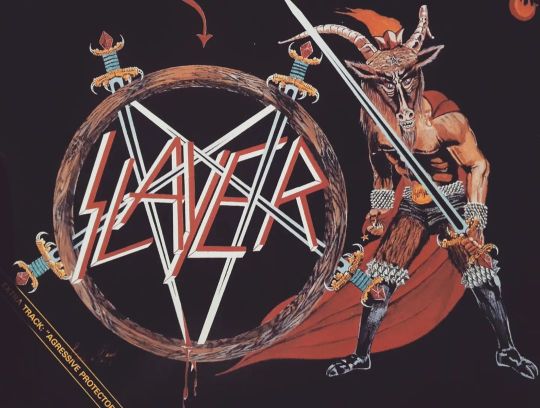



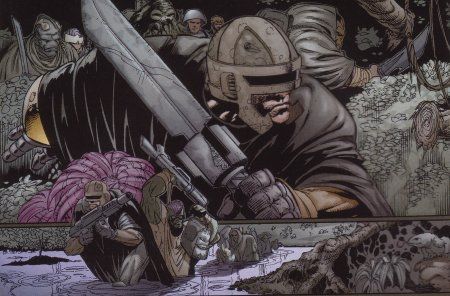
TAKE TWO -- TUMBLR BOTS PUT THIS POST IN JAIL UNLESS I COURSE-CORRECTED MYSELF.
NOTE:^True story. Tumblr censors flagged this post initially over H.R. Giger's "Necronomium" painting, and I guess even biomechanoid double-penetration is taking things a step too far. It's art for fuck's sake!
PIC(S) INFO: Spotlight on the first set of Tumblr Cover photos for the month of December, and some of these really need to be posted and done with already. Anyway, here comes another trusty roll call:
"STAR WARS: Crimson Empire" (1998), artwork by David Dormand, a 1971 print advertisement for Imported Tanqueray Special Dry Distilled English Gin, H.R. Giger's reported greatest masterwork "LI II" (1974), sleeve art to SLAYER's 1983 debut album, "Show No Mercy," a film still from the European art/counterculture film "MORE" (1969), the '80s hardcore punk band name VOID translated into the Japanese written language, Hollywood actress Jayne Mansfield as she appeared on the cover of "Hollywood Babylon," and a panel of former member of the Emperor's Royal Guard, Kir Kanos, reborn as bounty hunter Kenix Kil.
Sources: Dark Horse, Picuki (2x), Pinterest, Collider, Difford's Guide, British Film Institute, The Guardian, various, etc...
#TumblrCoverPhotos2023#CoverPhotos#TumblrCoverPhotos#CoverPhotos2023#STAR WARS#CrimsonEmpire#Slaytanic#80sthrash#ShowNoMercy#MORE 1969#More 1969#FilmStills#VOID band#80shardcore#KenixKil#BountyHunter#Sci-fi#STAR WARS: Crimson Empire#Tanqueray#Hollywood Babylon#1983#Biomechanical#ScifiFri#SLAYER#LI II#DaveDorman#H.R. Giger#Cinema#Expanded Universe#LI II 1974
2 notes
·
View notes
Text
Tutti gli UFO sopra Firenze dalla guerra ad oggi: 1954 6° parte


Ci credete? Non ci credete? Poco importa. Il fenomeno ufologico è vecchio quanto il mondo. Gli avvistamenti, reali, finti, "costruiti" nel mondo sono innumerevoli e su Firenze e provincia non mancano.
Questa è un piccola rubrica per citare gli avvistamenti registrati su Firenze e provincia dal 1946 al 1980, se poi qualcuno ha a disposizione anche quelli successivi, e ce li fornisce, potremmo pubblicare anche quelli dal 1980 in poi.
Questo l'articolo precedente: Tutti gli UFO sopra Firenze dalla guerra ad oggi: 1954 5° parte
Il 1954 è stato un anno particolarmente prolifico per gli avvistamenti UFO su Firenze e provincia, tanto da dividere in più parti la loro segnalazione. Questa è la sesta parte ed ultima.
Il 29 ottobre 1954 dalle 15.30 alle 16.45 sopra il cielo di Settignano caduta di bambagia, lo riporta AA. VV., UFO in Italia - vol. II - L'ondata 1954, Tedeschi 1980, p. 275.
Svariate persone, ma lo riporta il signor Bruno Sarti residente a Settignano, osservarono per oltre un'ora una ininterrotta caduta di "bambagia vitrea" di colore bianco. I batuffoli di bambagia appena toccavano terra si contraevano e cambiavano forma. Talvolta assumevano la forma di una "palla da gioco". Coloro che hanno provato a toccarli raccontano che la bambagia si rimpiccioliva diventando sempre più impalpabile fino a volatilizzarsi. Contemporaneamente fu segnalata una pioggia simile a Rifredi, Prato e Campi Bisenzio, dove caddero "agglomerati" spiraliformi che si modificavano appena giunti a contatto con il suolo o con gli alberi.[
Sempre il 29 ottobre 1954 verso le 18.10 sopra il cielo di Firenze nella zona di Rifredi viene avvistato un oggetto, lo riporta AA. VV., UFO in Italia - vol. II - L'ondata 1954, Tedeschi 1980, p. 276
Viene avvistato un oggetto di colore rossastro.
Il 30 ottobre 1954 sopra il cielo di Firenze furono visti svariati oggetti volanti, lo riporta La Nazione del 31-10-1954.
In quella giornata furono segnalati i passaggi di diversi oggetti volanti sul cielo fiorentino. Alcuni isolati altri a coppie ed altri ancora in formazione serrata. Sono state descritte come "uova bianchissime", da una voce femminile che telefonò alla redazione de La Nazione. Sembra anche che un operatore cinematografico sia riuscito a riprendere gli strani ordigni che solcavano il cielo.
Il 3 novembre 1954, nella notte verso le 5.30, sopra il cielo di Firenze furono avvistati degli "arnesi", lo riporta La Nazione del 03-11-1954; AA. VV., UFO in Italia - vol. II - L'ondata 1954, Tedeschi 1980, p. 313
Piero Giampieri che era assieme ai genitori attraversava, su una motocicletta, il ponte alla Carraia e vide due o tre di "quegli arnesi" o di "quelle cose" luminose, fatte come "bachi di color bianchiccio" volare al di sopra del cielo delle Cascine. A velocità vertiginosa gli oggetti passarono in pochi secondi su Firenze dirigendosi verso San Niccolò quindi da Ovest ad Est). Al La Nazione viene anche riferito che diverse persone avevano notato dei "dischi" mentre si trovavano in piazza Stazione.
Il 4 novembre 1954, verso le ore 18.45, sopra il cielo fiorentino furono visti oggetti rossi, lo riporta Spazio e Vita, vol. II, n. 1 - genn./febbr. 1959, p. 5; AA. VV., UFO in Italia - vol. II - L'ondata 1954, Tedeschi 1980, p. 317.
Il pittore Mario Romoli, che nel 1974 abitava in via dei Serragli 113, vide uno o più oggetti di colore rosso attraversare il cielo da nord a sud con velocità vertiginosa, lasciando una scia argentea o azzurra chiara. Dell'avvistamento il Romoli scattò anche delle fotografie. Al fatto assistettero numerose altre persone, che descrissero più o meno le stesse cose in riguardo all'avvistamento. Tra queste vi erano: il maestro Alberto Cocchieri e il signor Pettini, i quali videro un "sigaro" luminoso in via dei Pucci; il giovanissimo Paolo Muci, residente in viale Mazzini 59, il quale vide da via Mannelli il "disco" descritto come "un fuoco d'artificio"; Attilio Pluda segnalò l'osservazione da via Mameli; la moglie di un capo stazione mentre attendeva il filobus in piazza San Marco; Gianfranco Valloni, residente in via del Ghirlandaio 70 ed Alberto Dolara, residente in via Sella 5, che lo osservarono da piazza della Stazione; la signora Titti Cunoli e la signora Salmon da piazza SS. Annunziata; Paolo Pagni da via Massaia; la signorina Liliana Bruni nell'atto di guardare verso il piazzale Michelangelo; un certo Bertagna da via della Fonderia; Mario Beda mentre percorreva via Landucci; il rag. Franciolini dall'autostrada, in ritorno da viareggio verso Firenze; Sergio Innocenti da piazza del Duomo; l'ing. Giuseppe Checcucci, residente in viale Lavagnini 24, mentre rientrava da Empoli percorrendo via Pisana e la signora Giuseppina Trombetti, dimorante in via Ghibellina 32, i quali, tutti, resero analoga testimonianza.
Il 23 novembre, verso le 15.00 sopra il cielo di Firenze furono visti dei "dischi", lo riporta Il Mattino del 24-11-1954; Dossier UFO 1954 del gruppo di ricerca Solaris di Napoli.
Numerose persone che si trovavano sui lungarni, osservarono, in una giornata limpidissima, il passaggio nel cielo di cinque dischi provenienti da Nord-Est e diretti verso Sud. I dischi apparvero improvvisamente dalla parte di Prato, volando in perfetta formazione a 4000 metri di quota e lasciando dietro di loro una scia bianchissima. Ad un certo punto, quando si trovarono sul piazzale Michelangelo, due di essi dirottarono ed in seguito ripresero il loro posto. L'aeroporto di Peretola non rilevò nessuna segnalazione relativa al transito di aerei, mentre l'osservatorio astrofisico di Arcetri osservò il passaggio dei corpi.
Il 28 novembre sopra il cielo di Figline Valdarno fu visto un oggetto, lo riporta Perego Alberto, Rapporto sull'aviazione elettromagnetica, Alper, Roma 1957.
Avvistato oggetto volante non identificato. Nessun dato.
Il 3 dicembre 1954 sopra il cielo di Firenze fu avvistato un "pallone", lo riporta AA. VV., UFO in Italia - vol. II - L'ondata 1954, Tedeschi 1980, p. 465.
In un giardino di via Celso, appartenente alla signora Lisa Ciolli, una certa Marilena Gori, che abitava al n. 7 della stessa strada, vide cadere su un pero un "grosso pallone di gomma plastica, bianchissimo e trasparente come nylon", avente il diametro di circa 3 metri. Ancora gonfio, l'oggetto fu portato dal dr. Trodella, dirigente del Commissariato di Pubblica Sicurezza di Rifredi, e fu constatato che si trattava di un sottile tessuto di gomma non recante però, come d'uso per i palloni sonda, numeri o iniziali di enti militari e nemmeno la dicitura "Esercito Italiano". Gli addetti all'aeroporto di Peretola dissero che in Toscana non era stato lanciato di recente nessun pallone sonda. Si sparse comunque la voce, senza peraltro conferma alcuna, che un "disco volante" avvistato a Milano, passando su Firenze, avesse sganciato tale specie di pallone.
Read the full article
0 notes
Text
Holidays 10.16
Holidays
Air Force Day (Bulgaria)
Bells Across America for Fallen Firefighters
Blog Action Day
Clean Your Bug Zapper Day
Department Store Day
Ether Day
Global Cat Day
Learn a Word Day
Maintenance Personnel Day
National Cut Up Your Credit Card Day
National Department Store Day
National DGS Day
National Dictionary Day
National Feral Cat Day
National Report Truth in Negotiations Act Fraud Day
National Wolf Awareness Day
Pope John Paul II Day (Poland)
Population Control Day
Restart A Heart Day (UK)
Steve Jobs Day (California)
Teachers’ Day (Chile)
World Allergy Awareness Day
World Anesthesia Day
World Spine Day
Food & Drink Celebrations
National Liqueur Day
National Veterans BBQ Day
United Church of Bacon Day
World Food Day (UN)
3rd Sunday in October
Brown Ale Day [3rd Sunday]
Sunday School Teacher Appreciation Day [3rd Sunday]
World Toy Camera Day [3rd Sunday]
Feast Days
Balderic (a.k.a. Baudry) of Monfaucon (Christian; Saint)
Bercharius (Christian; Saint)
Bertrand of Comminges (Christian; Saint)
Blue Whale Contemplation Day (Pastafarian)
Colmán of Kilroot (a.k.a. Colman mac Cathbaid; Christian; Saint)
Eliphius (Christian; Saint)
Feast of ‘Ilm (Knowledge; Baha’i)
Feast of the Ingathering [21 Tishrei] (a.k.a. ...
Feast of the Tabernacles (Christian)
Festival of Shelters (Christian)
Harvest Home (UK)
Kirn (Scotland)
Mell-Supper (Northern England)
Sukkot (Judaism)
Fortunatus of Casei (Christian; Saint)
Gall (Christian; Saint)
Gerard Majella (Christian; Saint)
Hedwig of Silesia (Christian; Saint)
Hugh Latimer (Anglicanism)
Junian (of Saint-Junien; Christian; Saint)
Lullus (a.k.a. Lullon), Archbishop of Mentz (Christian; Saint)
Malcolm the Lion (Muppetism)
Marguerite Marie Alacoque (Christian; Saint)
Marie-Marguerite d'Youville (Christian; Saint) >li>Mummolin (a.k.a. Mommolin), Bishop of Noyon (Christian; Saint)
Nicholas Ridley (Anglicanism)
Opening the Bosom of Women (Hathor’s Temple; Ancient Egypt)
Pamela Anderson Day (Church of the SubGenius; Saint)
Pascal (Positivist; Saint)
Silvanus of Ahun (Christian; Saint)
Thevarparampil Kunjachan, Blessed (Syro-Malabar Catholic Church, Catholic Church)
Victor III, Pope (Christian; Saint)
Lucky & Unlucky Days
Fortunate Day (Pagan) [42 of 53]
Taian (大安 Japan) [Lucky all day.]
Unlucky Day (Grafton’s Manual of 1565) [48 of 60]
Premieres
Bridge of Spies (Film; 2015)
Crazy, by Patsy Cline (Song; 1961)
Dare by the Human League (Album; 1981)
Demon Slayer: Kimetsu no Yaiba the Movie: Mugen Train (Anime Film; 2020)
Electric Ladyland, by Jimi Hendrix (Album; 1968)
Fry Me Cookie, With A Can Of Lard, recorded by Will Bradley (Song; 1941)
It’s Only Rock N’ Roll, by The Rolling Stones (Song; 1974)
Jane Eyre, by Charlotte Brontë (Novel; 1847)
The Kids in the Hall (TV Series; 1988)
The Lion, the Witch and the Wardrobe, by C.S. Lewis (Novel; 1950) [Book 1 of The Chronicles of Narnia]
The Lobster (Film; 2015)
Pierrot Lunaire, by Arnold Schoenberg (Melodrama; 1912)
Practical Magic (Film; 1998)
Pygmalion, by George Bernard Shaw (Play; 1913)
The Sensual World, by Kate Bush (Album; 1989)
Today’s Name Days
Hedwig (Austria)
Hedviga, Margareta, Marija (Croatia)
Havel (Czech Republic)
Gallus (Denmark)
Siret, Sirja, Sirje (Estonia)
Luna, Sirkka, Sirkku, Stella (Finland)
Edwige (France)
Carlo, Gallus, Gordon, Hedwig (Germany)
Gál (Hungary)
Edvige, Fortunato, Irene, Margherita (Italy)
Daiga, Daigone, Dainida, Egils (Latvia)
Ambraziejus, Dovaldė, Gutautas, Jadvyga, Margarita (Lithuania)
Finn, Flemming (Norway)
Ambroży, Aurelia, Dionizy, Florentyna, Galla, Gallina, Gaweł, Gerard, Gerarda, Gerhard, Grzegorz, Radzisław (Poland)
Vladimíra (Slovakia)
Beltrán, Eduviges, Eduvigis, Florentino, Gerardo, Margarita (Spain)
Finn (Sweden)
Avice, Avis, Gerar, Gerard, Gerardo, Gerrard, Hedda, Hedwig, Hedy, Heide, Heidi, Jerard, Noah, Noe (USA)
Today is Also…
Day of Year: Day 289 of 2022; 76 days remaining in the year
ISO: Day 7 of week 41 of 2022
Celtic Tree Calendar: Gort (Ivy) [Day 16 of 28]
Chinese: Month 9 (Júyuè), Day 21 (Red-Yin)
Chinese Year of the: Tiger (until January 22, 2023)
Hebrew: 21 Tishri 5783
Islamic: 20 Rabi I 1444
J Cal: 19 Shù; Foursday [19 of 30]
Julian: 3 October 2022
Moon: 60%: Waning Gibbous
Positivist: 9 Descartes (11th Month) [Pascal]
Runic Half Month: Wyn (Joy) [Day 6 of 15]
Season: Autumn (Day 24 of 90)
Zodiac: Libra (Day 22 of 30)
0 notes
Photo
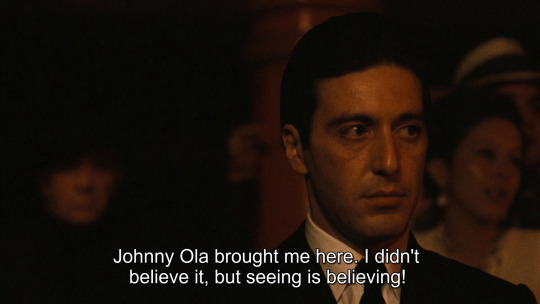

33 notes
·
View notes
Note
nessaaa hi hello tell me your favourite things<3 <3
vicky hiiii okay so i did actually start putting together a list like this yesterday so here you go <3 <3 <3
and then we danced (2019) one of my favourite movies of all time, it just holds a very very special place in my heart
the godfather (1972) + the godfather part ii (1974) + the behemoth i know you've already seen these, but i couldn't not put them in given uhh everything i do with my time
all the president's men (1976) once again.... self explanatory but genuinely an insanely insanely good movie i am obsessed with it, i adore it so so much
moonlight (2016) genuinely lifechanging. i watched it for the first time last june (??) and i haven't stopped thinking about it since, i will forever be awed and blown away by this
oh also ! dog day afternoon (1975) and shoplifters (2018)
angels in america by tony kushner !!!!! i can't stress enough how incredibly, incredibly important this play is to me for so so many reasons, it's one of the most beautiful things i have ever read/seen, it's breathtaking in so many ways
the normal heart by larry kramer <3 this devastated me, just completely, there's a recording of it on youtube here (give it up for raul esparza!!) it's so beautiful and so heartbreaking
giovanni's room by james baldwin ! i LOVE baldwin's writing with my whole, whole heart. he's such a beautiful writer, i can't praise him enough. there are some Interesting™ and outdated moments in this, but it is such an excellent book
the castle by franz kafka !! and genuinely anything at all by kafka, i know we all talk about him but he is brilliant and i adored this novel
the velveteen rabbit by margery williams okay so this was probably the very first book to leave me absolutely shattered, i can't remember when i first read it but i guess i must have been very very young, it destroyed me then it destroyed me now, it is so incredibly beautiful
swing time by zadie smith <3 some of the most excellent writing i've ever read i think, it's incredible and so so skilled, it's the only thing i've read of hers so far but i cannot wait to read more
burn by patrick ness !! i will admit he does write very much ya stuff, but idk there's something about the way he writes that is incredibly moving to me and that goes for all of his books
art & lies by jeanette winterson ! i adore her, i adore her so so much (winterson) i LOVE the way she writes and the way she plays with structure, i think it is endlessly interesting
sturdy lanterns and ladders by malka older can be found here and is my favourite short story EVER
night walk by franz wright is a horrifically good poem, and in fact, anything and everything by franz wright makes me want to scream
perhaps the world ends here by joy harjo which is where my favourite tag comes from lmao and you can read it here
the weatherman by gregory alan isakov <333 there is a reason this album was my url for awhile and it is because it's a brilliant, brilliant album i love and adore every song on there, it's so beautiful
capacity by big thief ! again, the album, gorgeous, stunning, "mary" has and will continue to make me cry, no words, just highly recommended
grace by jeff buckley ! again, the album. and also everything and anything by jeff buckley. he is without a doubt one of my absolute favourite musicians of all time. he is just beautiful. i KNOW i've spoken about him before but yeah....
the rise and fall of ziggy stardust and the spiders from mars by david bowie !!! the first album of his i listened to all the way through by myself and god, well, you know
soft sounds from another planet by japanese breakfast <3333 theeee album, i love it with my whole chest just so so so much. i cannot begin to describe it
#i told you it was going to be long vicky.............. i could probably have kept going if i thought about it more but i think that yeah.#i think this is the general gist of it all#um#this feels extremely weird actually . huh . okay well there you go !!!#vicky 🍃#a
11 notes
·
View notes
Text
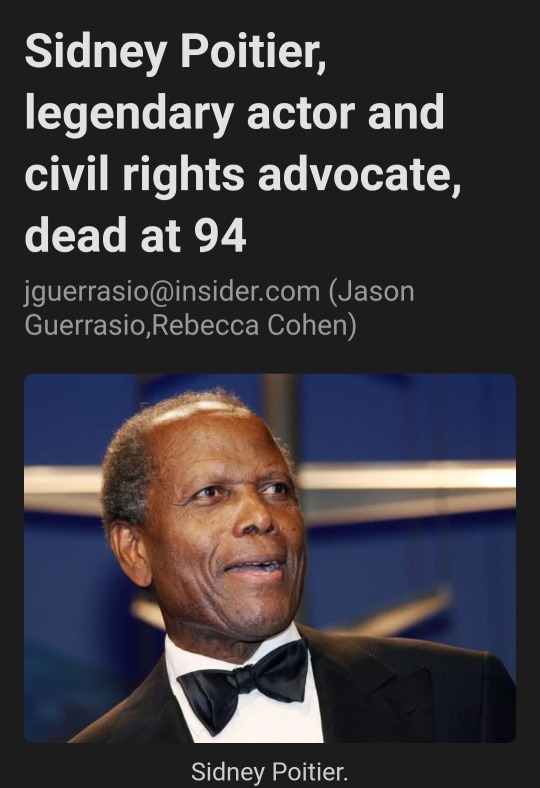
Legendary actor Sidney Poitier, the first male Black actor to win the Academy Award for Best Actor, has died, the Bahamian Minister of Foreign Affairs confirmed to Insider.
He was 94.
Poitier was a trailblazing Bahamian-American actor who — along with a career filled with landmark acting, directing, and producing roles — was also a voice for civil rights in the 1960s, and an ambassador for his beloved home country of the Bahamas.
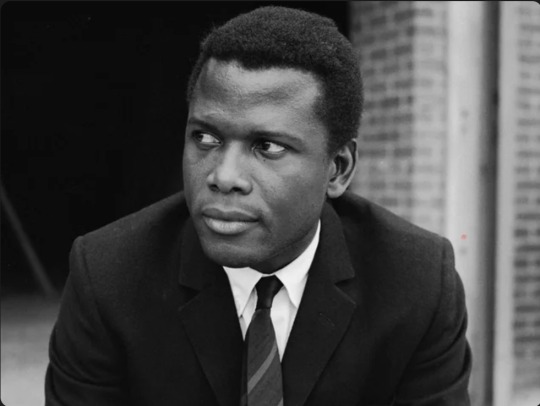
Poitier broke through in Hollywood, getting acclaim Black actors rarely received before
Poitier's work in Hollywood may have led to groundbreaking and iconic performances, but it didn't start out easy for him.
At 16, he moved to New York City and mostly found work as a dishwasher. In November of 1943, he lied about his age and enlisted in the Army to fight in World War II. After leaving the Army a year later, he landed a spot at the American Negro Theatre (there he would meet life-long friend, fellow upcoming actor Harry Belafonte).
Struggling to connect with audiences due to his Bahamian accent, Poitier dedicated himself to the acting craft and for six months refined his skills, leading to roles on Broadway.
Hollywood soon came calling, and he landed the role of a doctor treating a bigot in the 1950 movie "No Way Out." In 1955, Poitier scored a breakout performance as one of the unruly kids in "Blackboard Jungle."
Three years later, Poitier starred opposite Tony Curtis in "The Defiant Ones," playing escaped prisoners who are chained together. The movie was a commercial and critical success, showcasing Poitier's raw talent. The movie would earn both Poitier and Curtis Oscar nominations and a Best Picture nod for the movie.
Poitier's nomination would mark the first time ever that a Black man was nominated in the Best Actor category.
He would make more history when he became the first Black actor to win in the Best Actor Oscar category for his performance in 1963's "Lilies of the Field" as a handyman who encounters a group of nuns who believe he was sent to them by God to build them a new chapel.
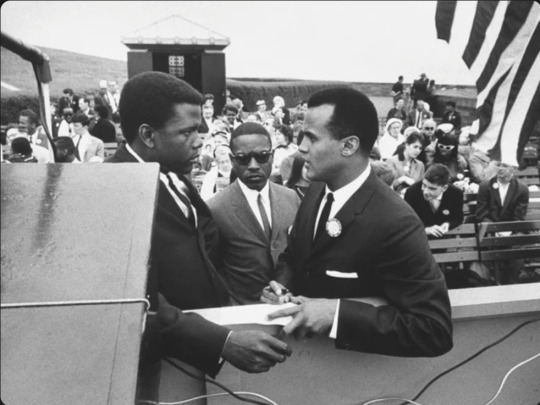
He and friend Harry Belafonte were major fixtures during the civil rights movement
As the most prominent Black actor in Hollywood of his time, Poitier used his fame to fight for change.
He began being a voice for the Civil Rights Movement alongside Belafonte.
In the early 1960s, Belafonte convinced Poitier to drive to the South with $70,000 to give to the Freedom Summer volunteers. The experience changed Poitier's life as the two actors were chased by Klansmen who fired guns at them, according to the New York Times.
The two also helped organize the landmark March on Washington in 1964, which featured Dr. Martin Luther King Jr.'s landmark "I Have a Dream" speech.
A year before Dr. King's assassination, the civil rights icon said of Poitier: "He is a man of great depth, a man of great social concern, a man who is dedicated to human rights and freedom. Here is a man who, in the words we so often hear now, is a soul brother."

Poitier became a huge star in the 1970s and an accomplished director
Poitier's stardom would only grow in the late 1960s.
In 1967, "Guess Who's Coming to Dinner" found him playing a Black man who meets his white girlfriend's parents (played by Spencer Tracy and Katharine Hepburn). He also starred in the crime thriller "In the Heat of the Night," in which he plays Virgil Tibbs, a Philadelphia detective who investigates a murder in a southern town.
Poitier would go on to play the Tibbs character in two sequels, "They Call Me MISTER Tibbs!" (1970) and "The Organization" (1971).
Into the 1970s, Poitier turned to directing, producing hits like "Uptown Saturday Night" (1974) and "A Piece of the Action," (1977) both starring Bill Cosby. In 1980, he directed "Stir Crazy," starring Richard Pryor and Gene Wilder.

Poitier turned to humanitarian work later in his life
Later in his life, Poitier turned to humanitarian efforts, specifically in the Bahamas, where he grew up before moving to Miami at 15.
He was the Bahamian ambassador to Japan from 1997 to 2007 and from 2002 to 2007 was the ambassador of the Bahamas to the United Nations Educational, Scientific and Cultural Organization.
President Barack Obama presented Poitier with the Presidential Medal of Freedom in 2009, the country's highest civilian honor.
Poitier was married twice. In 1950 he married Juanita Hardy, they divorced in 1965. His current wife, Joanna Shimkus, he married in 1976.
He was survived by six children, including actress Sydney Tamiia Poitier.
10 notes
·
View notes